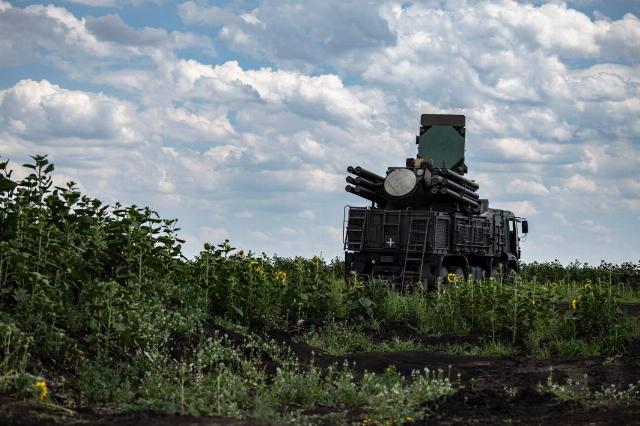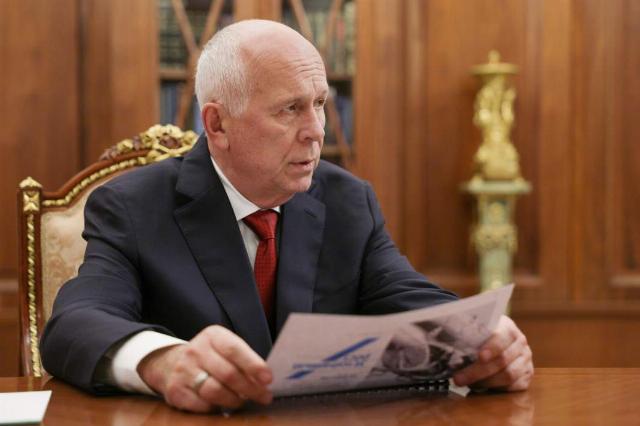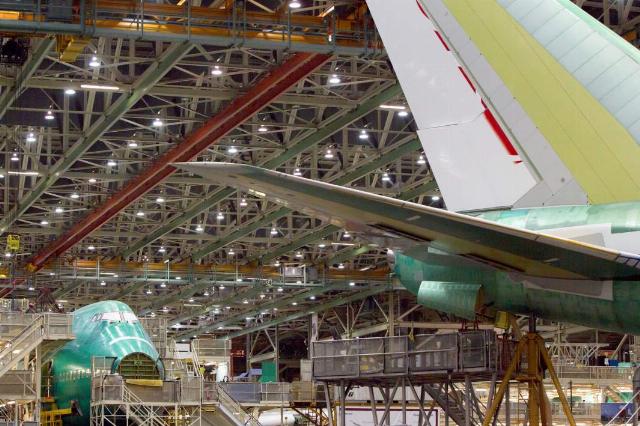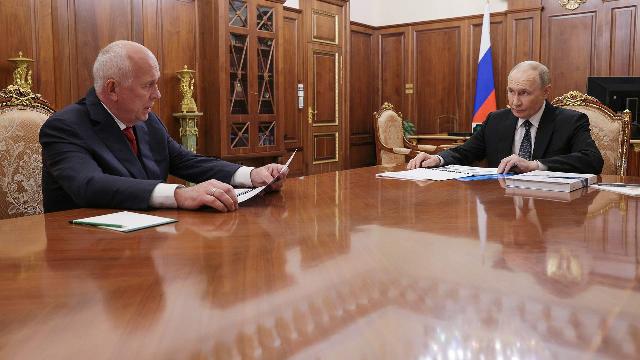Chemezov reported to Putin on the possibility of detecting inconspicuous targets and suppressing previously invulnerable drones.
The Russian military has begun using Pantsir complexes with 48 missiles to protect facilities from drone attacks, as well as new Sickle electronic warfare systems and mini-radars to detect drones. This became known on June 17 at a meeting between Vladimir Putin and Sergey Chemezov, CEO of Rostec State Corporation. Experts are confident that the new systems will form a single complex of weapons, which is especially necessary in the current conditions. How much the head of Rostec estimated the execution of the state defense order and how many civilian products the company produces is in the Izvestia material.
Production of new weapons for its
On June 17, Vladimir Putin held a working meeting with Sergey Chemezov, head of Rostec. The focus is on the production of weapons for the needs of the Russian Defense Forces, the modernization of military equipment, as well as the development of electronic warfare and airspace control systems.
In particular, the head of the corporation said that the Russian military has already begun using a series of new equipment for the defense of facilities — Pantsir complexes with 48 missiles, Sickle electronic warfare systems and mini-radars for detecting drones. Thus, the number of missiles for the SMD-E Pantsir model has increased fourfold, said Sergey Chemezov.
— Today, instead of 12, there are 48 missiles. This is very important in order to provide protection from drones, because 12 missiles are sometimes not enough if there is a massive raid. But 48, of course, is much better, and our military is very happy about it," he said.

Photo: RIA Novosti/Valentin Kapustin
Image source: iz.ru
In addition, a new Sickle electronic warfare system has been introduced: it is capable of detecting and suppressing, among other things, FPV drones and previously invulnerable drones with a control function in a wider frequency range. The Sickle is already used by many domestic defense enterprises, including ammunition companies, the head of Rostec noted.
Also, according to him, the High-Precision Complexes holding company has created an airspace control system.: These are mini-radars that detect inconspicuous targets in the form of drones. "Naturally, if they work in tandem with Pantsir, it is very effective. Well, if it's just for detecting inconspicuous targets, then the information goes immediately to the headquarters of the air defense system and certain destruction measures are already being taken there," Sergey Chemezov explained.
According to experts, the most important thing is that all of these weapons systems have been created or improved based on the experience gained during a special military operation.
— The mass appearance of drones has changed the nature of warfare. Electronic warfare and anti-aircraft systems are best suited to combat them. In particular, the Pantsir of the first modifications was designed to fight missiles and helicopters," military expert Vasily Dandykin explained to Izvestia.
New anti-aircraft mini—missiles are needed to fight drones - they are not expensive, which makes the destruction of UAVs not as expensive as when using classic anti-aircraft missiles. Such complexes will be needed by the fleet to protect airfields and other rear facilities.
At the same time, the enemy does not have such systems. The new radars and electronic warfare systems are also adapted to combat UAVs. It is this technique that allows the Russian Federation to combat drone attacks and its development is now necessary, the specialist explained.

Sergey Chemezov, CEO of Rostec State Corporation
Image source: Photo: RIA Novosti/POOL/Gavriil Grigorov
The Pantsir anti-aircraft complex is designed to organize zonal air defense, which covers important facilities, military expert Dmitry Kornev added. The new small missiles are primarily well suited to combat aircraft-type drones that target industrial attacks. Experts especially noted the automated link between detection and defeat systems, which significantly improves the situation with air defense.
— There is no doubt about the effectiveness of the Sickle-VS13D electronic warfare system. The new mini-radar, designed to detect UAVs, should work in tandem with the "Shells". Together they will form a single complex, which is especially necessary for us now. The radar will detect drones and give target indications to anti—aircraft complexes, including Pantsir," Dmitry Kornev believes.
Rostec's civilian products
In general, today 80% of all weapons used in its production facilities are produced by Rostec enterprises, said the head of the state corporation. And their execution of the state defense order is 99.9%. Moreover, Rostec's production of shells and ammunition has increased tenfold compared to 2021.
"In 2024, the production of new lightly armored vehicles and tanks increased 1.1 times, ammunition for cannon artillery — 1.3 times, for lightly armored vehicles and tanks — 2.1 times, shells for multiple rocket launchers — 1.7 times," said Sergey Chemezov.

Photo: TASS/Donat Sorokin
Image source: iz.ru
The head of the state corporation reported to the Russian leader on the main indicators of Rostec for 2024: the volume of investments amounted to a record 676 billion rubles, revenue increased by 27% and amounted to 3.6 trillion rubles.
— We are working to increase the share of civilian products. If we had 35% last year, then this year we have 30.7%, that is, we have decreased by 4.3 points. But in absolute terms, we are still growing: the volume of sales of civilian products has increased, revenue has increased by 11.6% and today it amounts to 1 trillion 108 billion, that is, we receive a third of our total revenue from civilian products," Chemezov said.
Separately, the head of state asked about the condition of Rostec's titanium production. According to the head of the company, it is loaded, but not completely — most of the work goes to aviation enterprises.

Photo: Global Look Press/Leonid Faerberg
Image Source: iz.ru
Against this background, the president added that Boeing had suffered damage by withdrawing from the Russian market. The head of the state corporation agreed, noting that the Americans had brought a large number of modern machines, and an entire production facility had been created. "Moreover, together with them we have created five of the most cutting-edge alloys [for the aviation industry], but we own 50-50 intellectual property," said the head of Rostec.
Other projects were also touched upon: in particular, the CEO of the state corporation said that the second of Rostec's five waste incineration plants would be commissioned in 2026.
Vasilisa Yaseneva
Roman Kretsul

